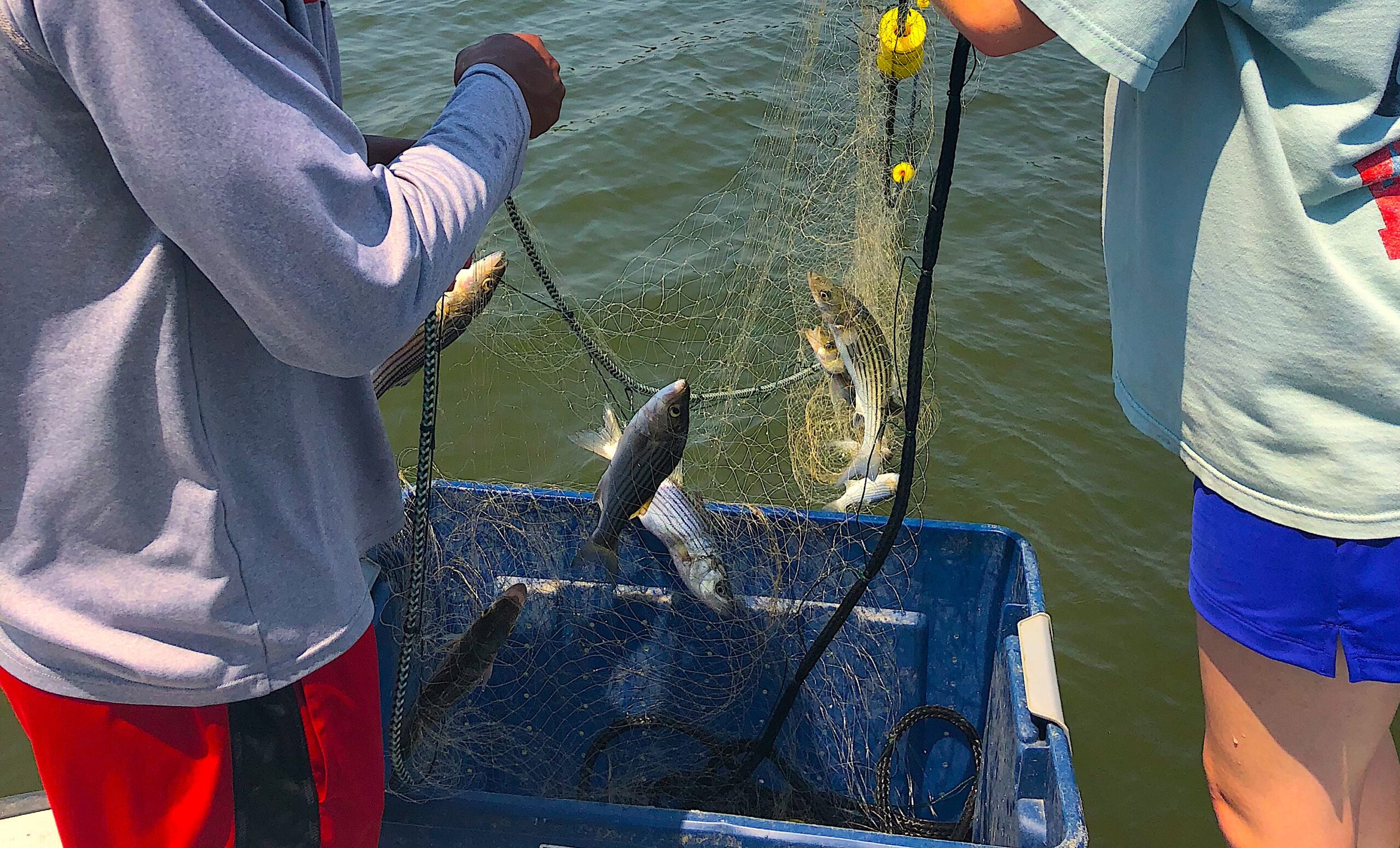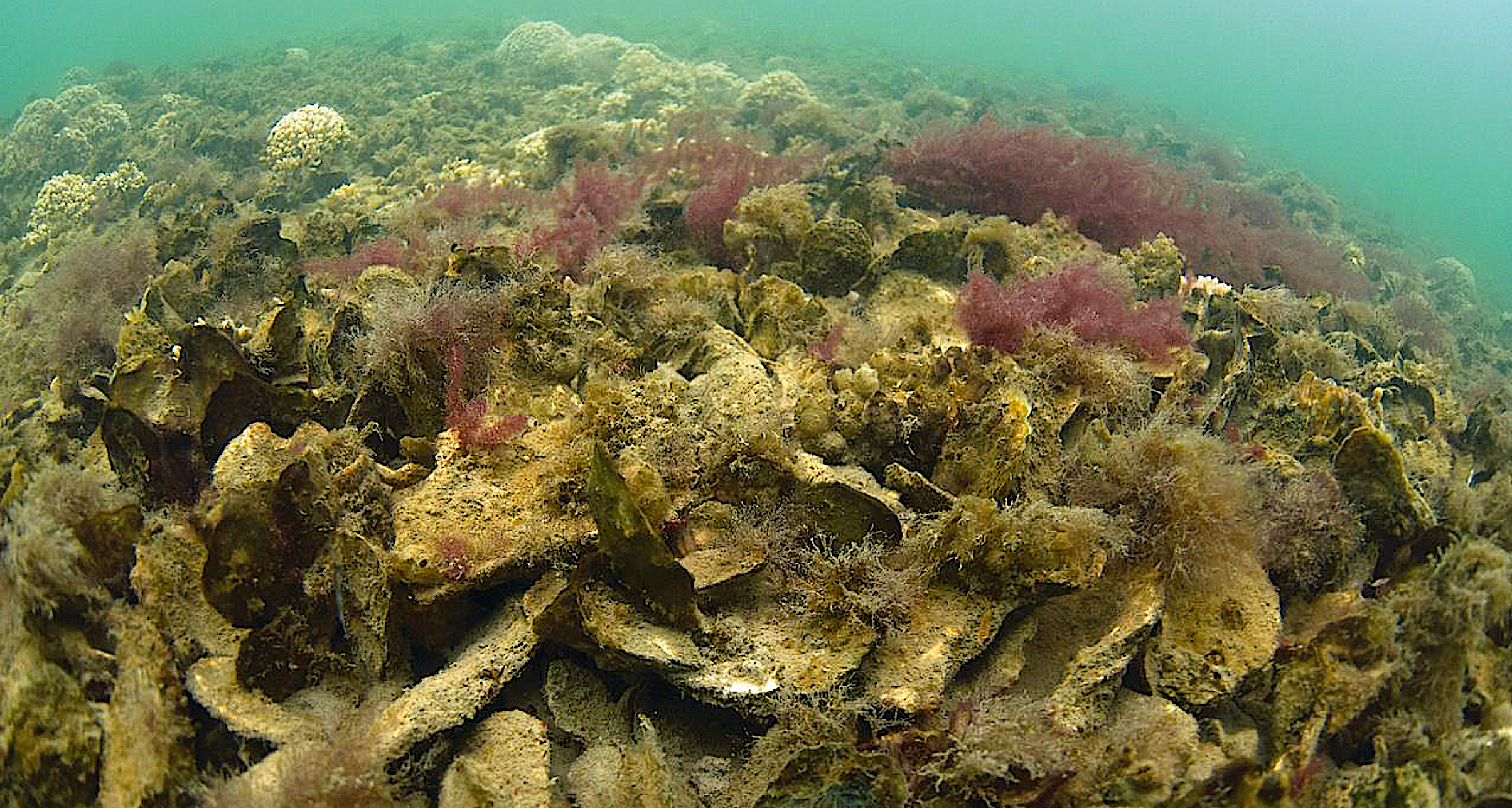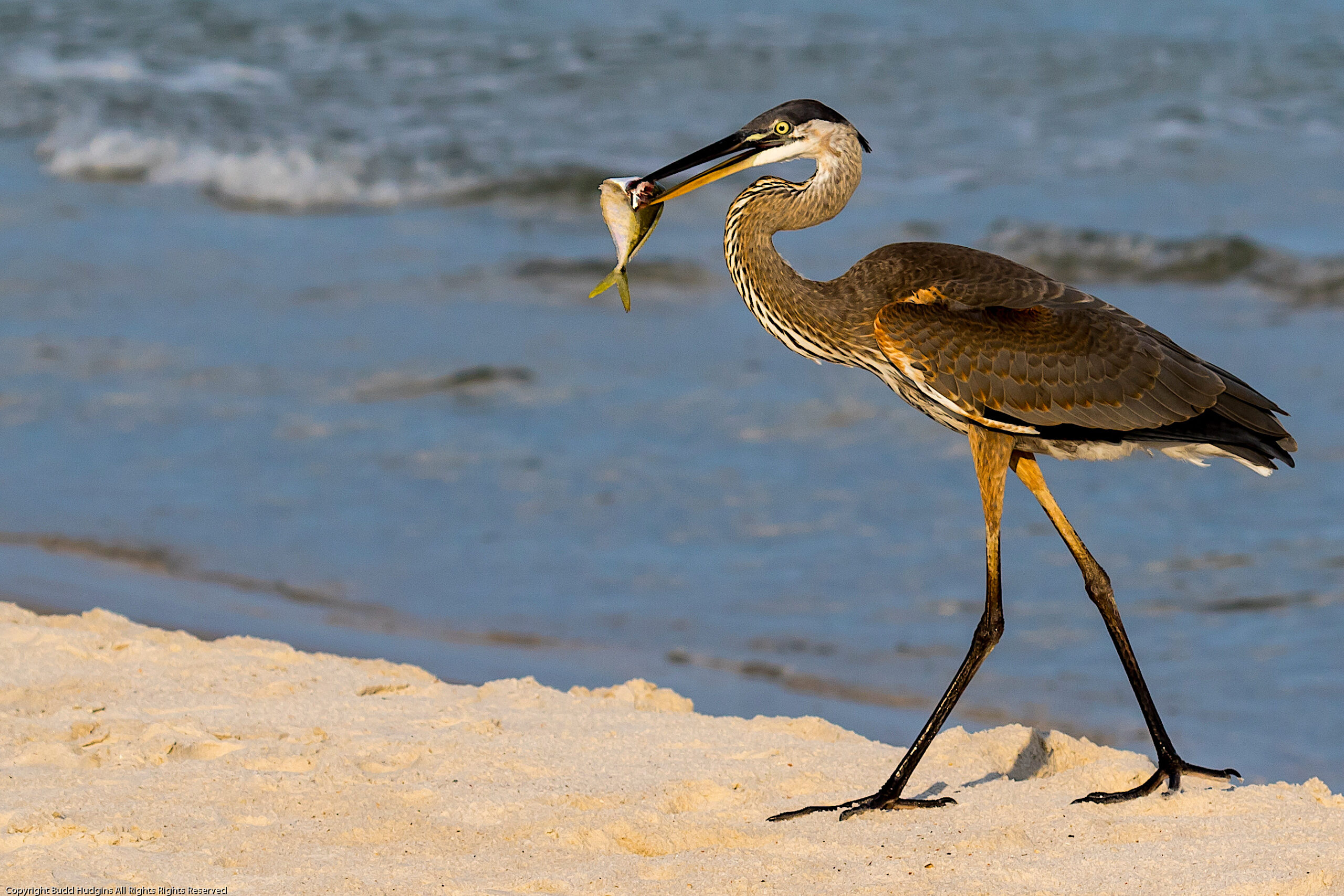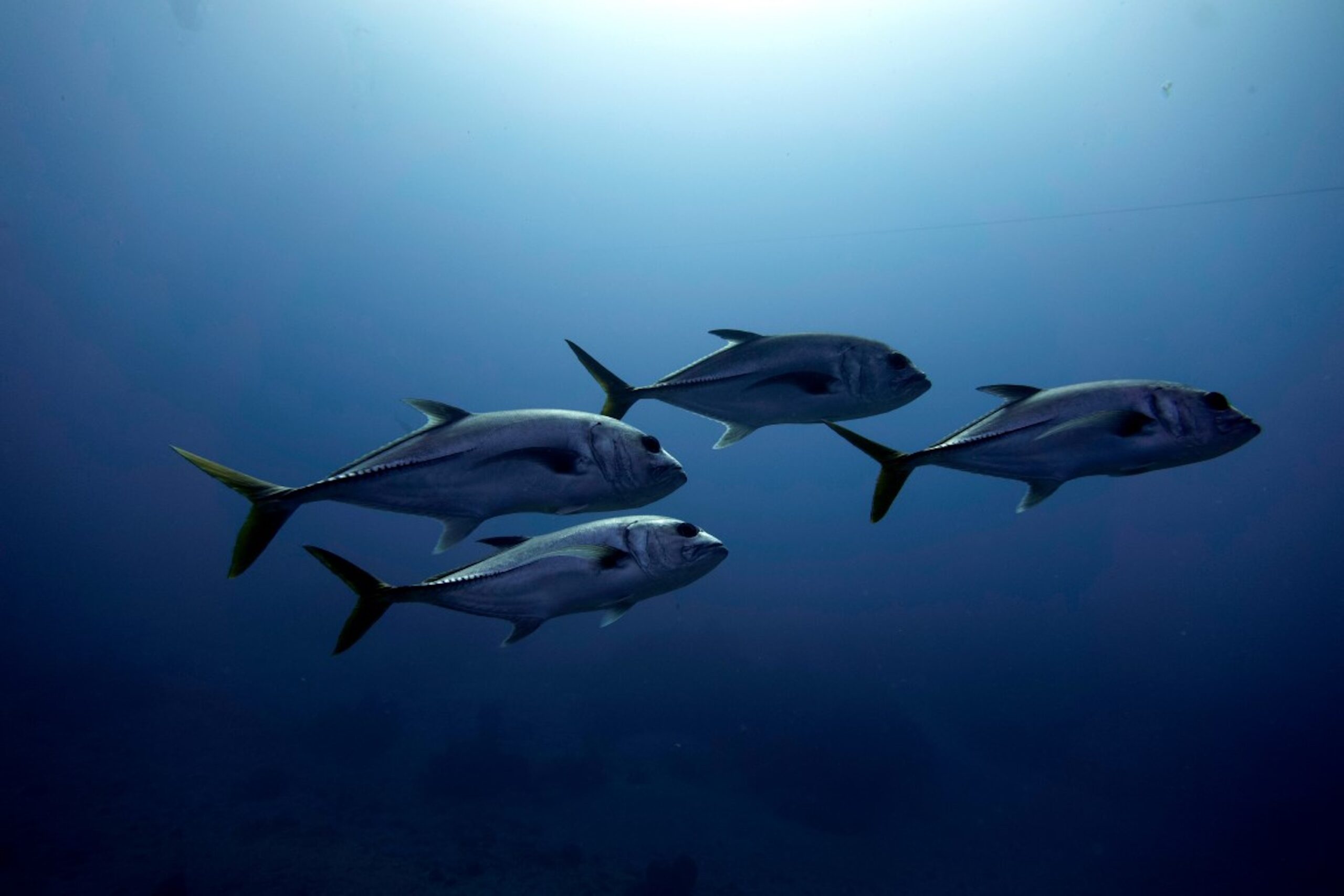What are striped bass under a year old eating in the Chesapeake Bay?

This species has a more diverse diet than we thought.
Research Need
Striped Bass Morone saxatilis are dominant predators in estuaries and coastal habitats along the East Coast and feed on prey in different habitats throughout their life cycle.
Although the primary focus of previous diet studies was on adult striped bass, there was little information regarding the diet of juveniles in the Chesapeake Bay, which tend to reside in the bay’s shallow nursery habitats in freshwater or brackish tributaries.
What did we study?
We collected and examined gut contents from adult, juvenile, and young-of-year (under one-year-old) striped bass from nine tributaries across the Maryland and Virginia portions of Chesapeake Bay.
We compared two different methods — a genetic method and traditional microscopic examination — to identify prey in the gut contents of striped bass.
What did we find?
We found that the diet of young-of-year striped bass was different from those of juveniles and adults when young-of-year fish foraged in freshwater habitats. Although we identified prey that striped bass consumed that previous surveys also found, our genetic methods identified additional and important prey for these young fish: aquatic insects, banded killifish (Fundulus iaphanous), inland silversides (Menidia beryllina), barnacles (Amphibalanus improvisus), and grass shrimp (Palaemon spp.).
Many prey could not be identified in stomach contents using microscopic methods, but we were able to assign species names to 76% of prey identified with genetic methods.
Anything else?
The genetic method was so sensitive that we got some surprising findings.
First, we detected parasites of striped bass, such as acanthocephalans (e.g., Pomphorhynchus) and nematodes (e.g., Philometra) as well as parasites that don’t infect striped bass but do infect their prey (e.g., Argulus, Kudoa, leeches, and gregarines).
Second, we detected two prey species (one non-native and one assumed native) that we believe have not been previously reported as living in the Chesapeake Bay.
So, striped bass might be better at finding rare species than scientists.
So what?
This study highlights that salinity primarily drives diet composition, with striped bass consuming different prey as striped bass move from fresh to brackish waters when they age and grow. Our results also highlighted the importance of a wider range of prey species than what fishery managers previously assumed, particularly dipterans (two-winged insects) and smaller crustaceans, many of which are especially important to young-of-year fish in freshwater tidal areas.
Reading
KM Pagenkopp Lohan, R Aguilar, R DiMaria, K Heggie, T Tuckey, M Fabrizio & MB Ogburn (2023) Juvenile Striped Bass (Morone saxatilis) consume diverse prey in shallow tributary habitats of Chesapeake Bay. Marine and Coastal Fisheries. 15:e10259.
BY KATRINA LOHAN & MATT OGBURN.
Katrina Pagenkopp Lohan is a senior scientist and head of the Coastal Disease Ecology Laboratory at the Smithsonian Environmental Research Center. Her research examines the ecology of parasites and infectious disease in coastal waters and how humans alter these interactions. Matthew Ogburn is a senior scientist and head of the Fisheries Conservation Laboratory at Smithsonian Environmental Research Center. His research examines the management and conservation of fisheries species and the ecosystems that support them.
Follow both labs on X: @SERCDiseaseEco and @SERCfisheries.
This study was funded by a grant from the NOAA Chesapeake Bay Office.
The text from Hook, Line & Science is available to reprint and republish at no cost but only in its entirety and with this attribution: Hook, Line & Science, courtesy of Scott Baker and Sara Mirabilio, North Carolina Sea Grant.

- Categories:



